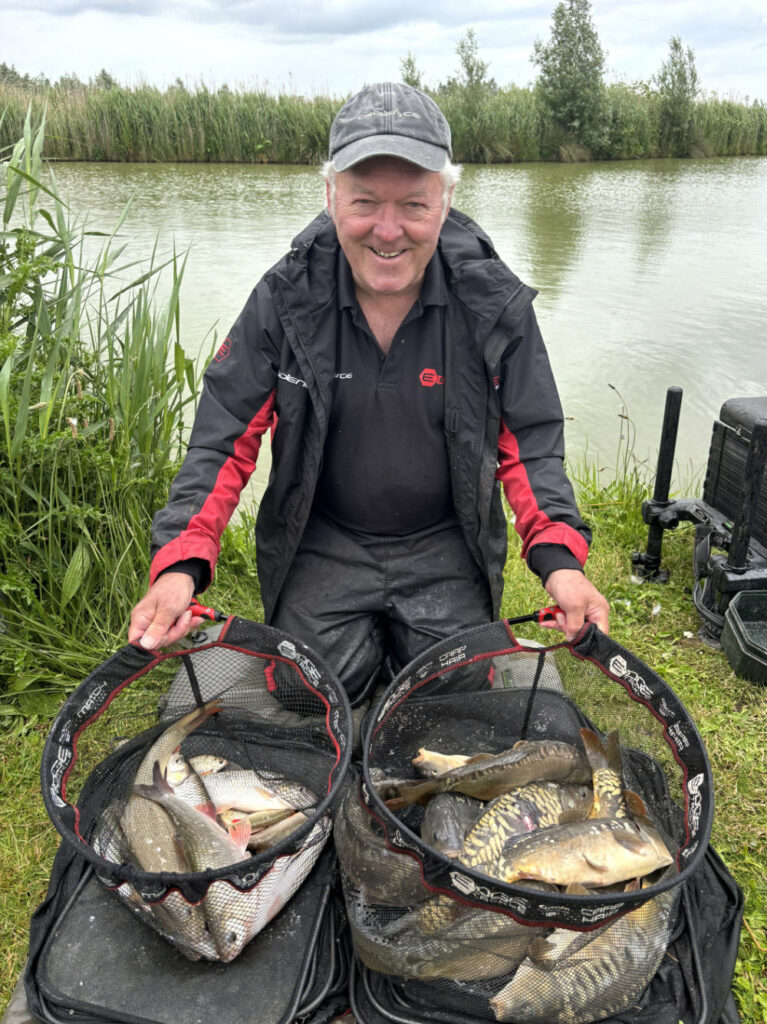Tackling Commercials
Look Away
I was getting to grips with a busy commercial fishery, the type of place Monty doesn’t see that often when out on the bank with his master James Robbins, who like me loves fishing wilder venues. Monty looked bored, probably thinking this would be another carp hauling session, wondering why we had dragged him here. While he was dreaming of the Warwickshire Avon or River Wye, I was giving my gear an airing, ready for the nearby fenland drains to open. During the close season, I had explored several stillwaters, discovering they held a surprising array of species. I had done my bit with bagging tactics like in-line feeders and pellet wagglers, now looking to do something different, wanting to try an approach that might find more than the hordes of match-sized carp most day ticket lakes are best known for.
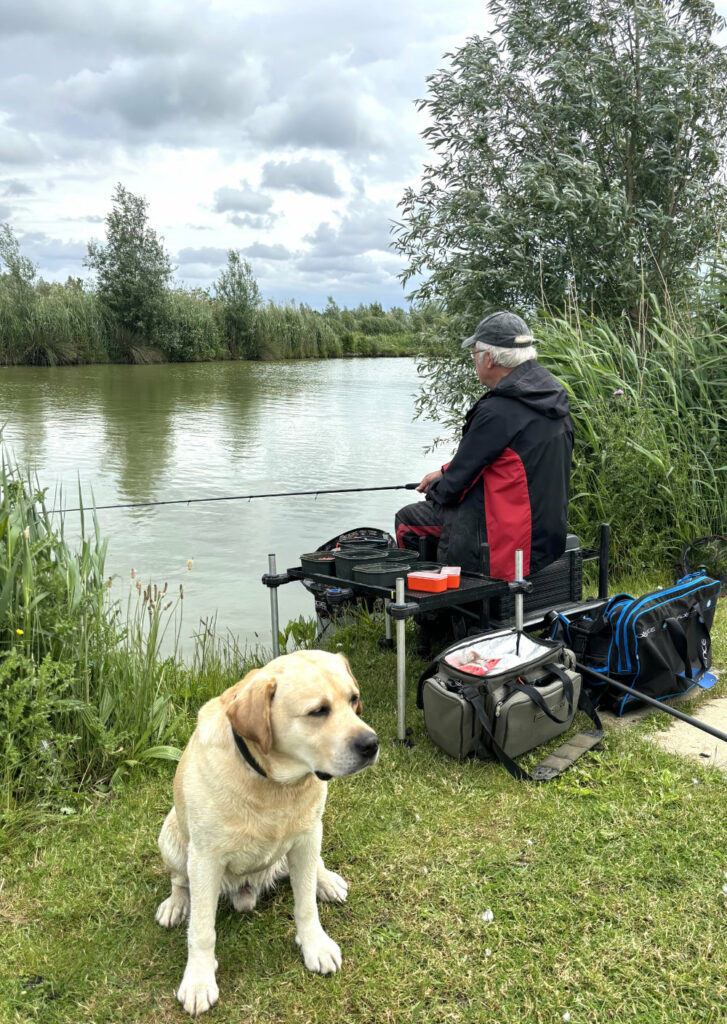
Crystal Clear
I had some Edge Tackle Crystal Clear Wagglers with me. These are quality, extra tough floats, which can handle everything from well-stocked lakes to big rivers. The insert models suit stillwaters, while the thicker tipped straights are ideal for running water or bad surface drift. Both types are available loaded or unloaded. In this instance, the inserts were perfect for casting over towards a big island, exploring down the ledge to start with, before going shallow and tighter to the far side reeds. The latter tactic is why I opted for an unloaded float because with bulked weights around its base, the setup doesn’t dive deep as the tackle lands. It also helps if the rig is feathered down, which makes the float tip pop up even faster. Clear Polycarbonate wagglers don’t tend to get nudged around by hungry carp like coloured floats do.
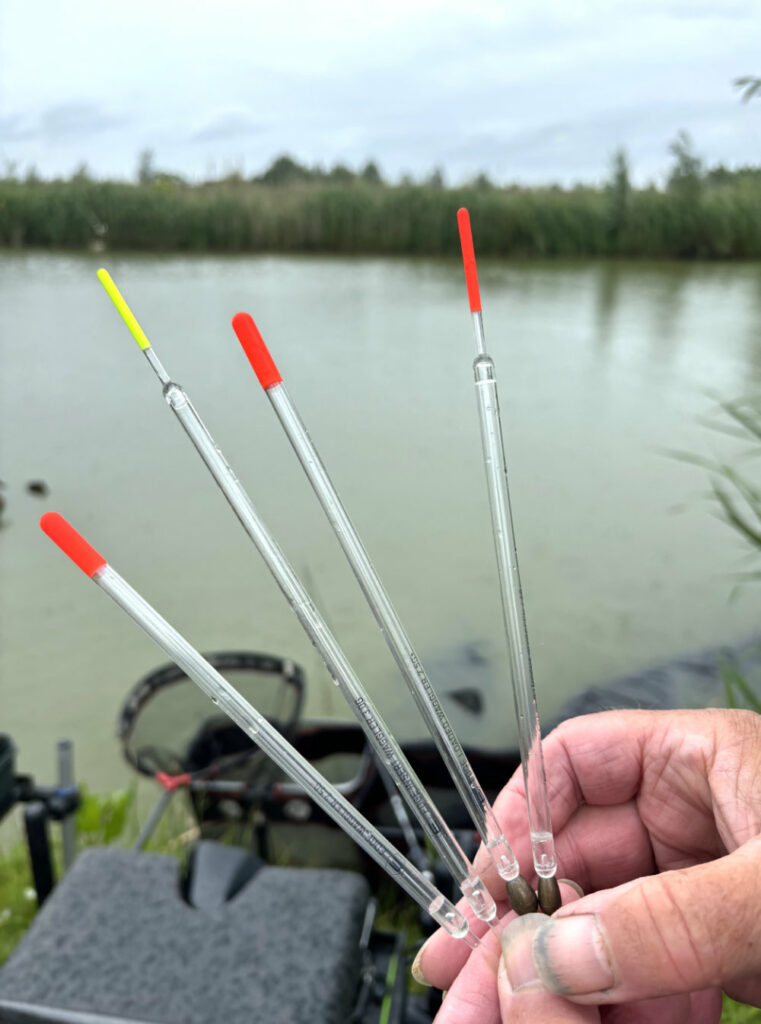
Going Under
My favourite main line for stillwater waggler fishing is Edge Sinking Mono. It out-performs everything else I’ve tried, being superbly robust, with just the right amount of controlled stretch to stay positive and not be too elastic. Most importantly, it cuts through surface tension with a sharp flick of the rod tip, which is the best way to sink line without dragging a waggler out of position. That’s vital when casting tight to features. However, when fishing in open water the rig can be cast beyond the feed area and wound back fast, using the reel to sink the line with the rod tip submerged. Another thing I like about Edge Sinking Mono is the way it absorbs lots of punishment when playing big fish, not damaging easily like some brands do, which then causes an annoying grating sound through the rod rings. I want it to be peaceful on the bank!
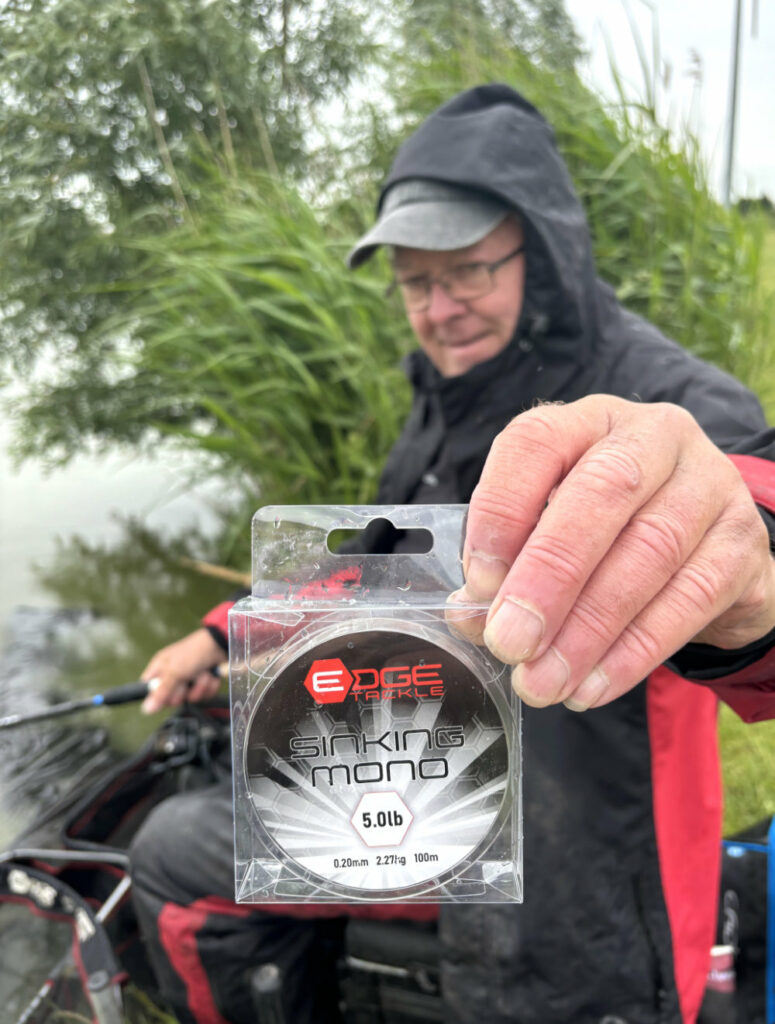
Early Birds
Casting tight to a feature on the far side or an island from the start will normally catch quick bonus fish, but tends to finish swims off prematurely. In my experience, it’s far better to gradually work waggler tackle in, starting down the ledge and then shallowing up and going closer. That way you can pick off fish on the outskirts of a feed area, leaving anything tight to the far bank feeding freely and gaining extra confidence. If something grabs your hook bait short, it can be extracted without disturbing the rest of the shoal. Carp were first to respond, and I nicked several without having to go right among where my loose feed was landing. I could see fish swirling for freebies against the island reeds, telling me they were competing, which is always a healthy sign. But there was no need yet to begin casting among all the main activity.
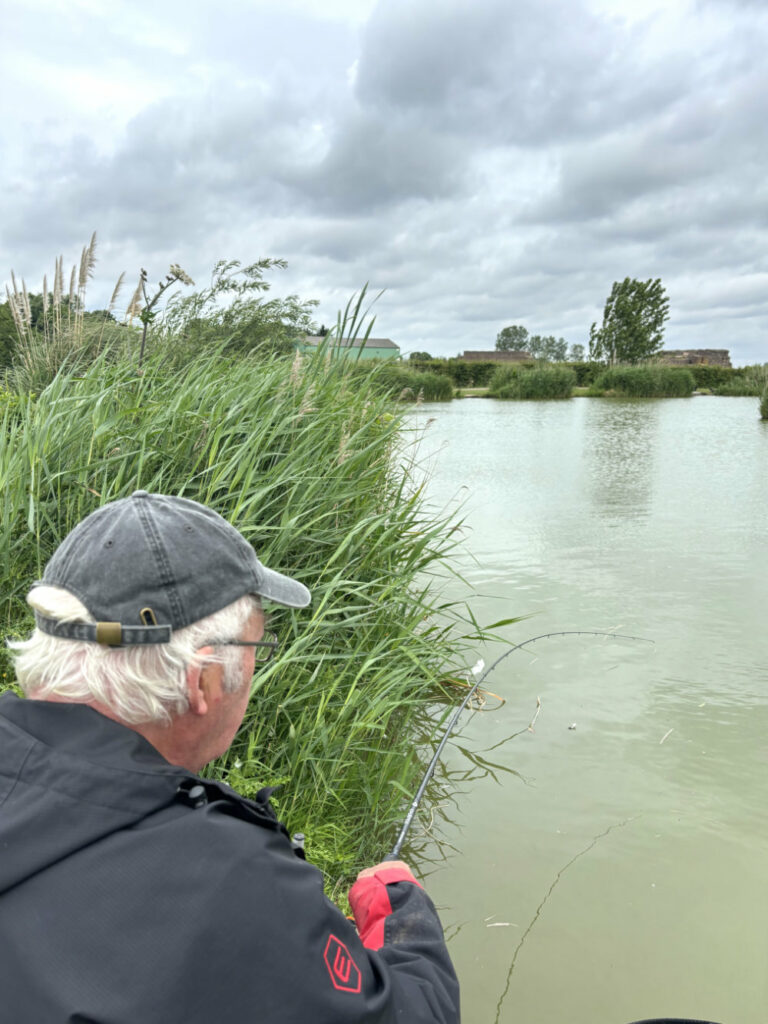
Pellets and Casters
I like a mixed bait approach on commercials. I don’t see many people taking this route. Apart from waking up the carp, it helps to find lots of other species like quality roach, chub, ide, and hybrids — if any are present. In this case, I was casting a good waggler distance, relying on 4 mm Robin Red pellets and casters, which match well together. If I was fishing less far, I might switch to 3 mm krill feed pellets, which allow bigger quantities to be fed, helping to hold fish like skimmers and bream for longer. The catapult I was using was a trusty old Drennan model, but kitted out with orange Guru latex and one of the newer Drennan plastic pouches. The latter keeps its shape better than other versions and groups bait well. I carry many catapults, all kitted out with different brands of elastics and various types of pouches that work best for me.
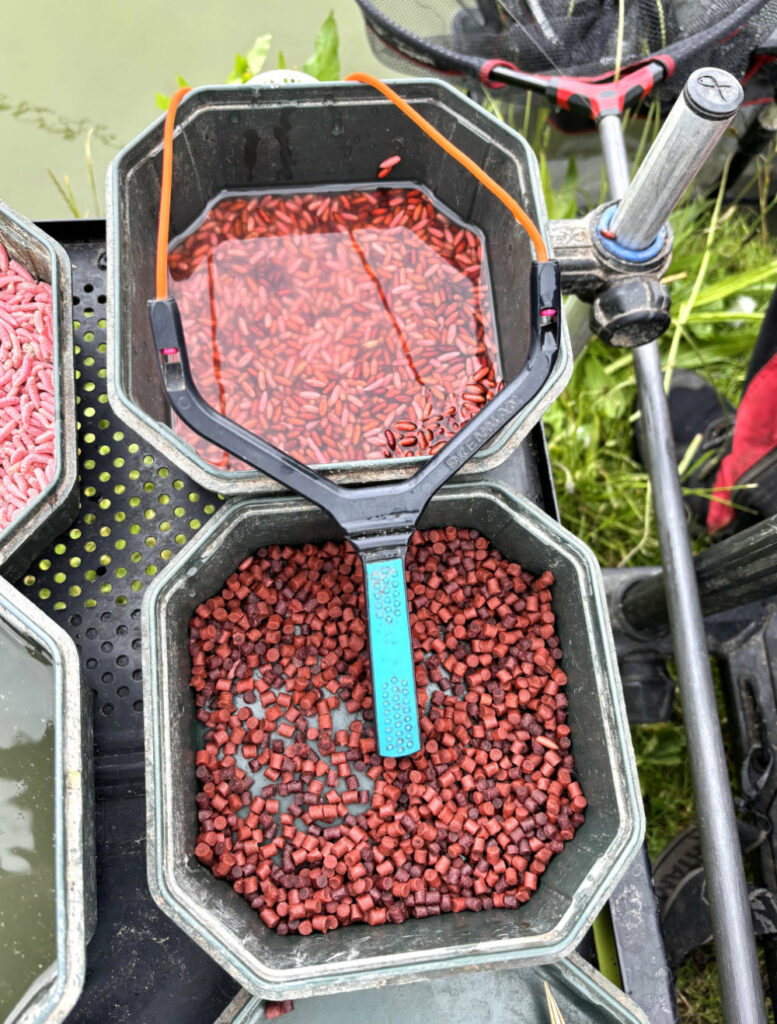
Getting There
When I eventually took a few inches off my rig depth and punched my float out further, I was into hard fighting fish straight away. Now they were feeding freely, a banded pellet was grabbed by hungry carp. Although not massive, they were tough little critters, giving my Cadence CR10 12ft #3 Match Rod a good workout. I used to catch far bank chub like this on canals and rivers with casters or maggots, but I’m sure these days pellets would also work. I use them a lot now for bream, tench and big rudd on wild venues. They were certainly proving effective here, where larger 6 mm or 8 mm sizes would be better at finding bigger carp, but I enjoy mixing it up on places like this. I aimed to get a few more carp out of the way before switching to casters. I was using a 4lb Edge Premium Mono hook length, attached to 6lb Sinking Mono main line.
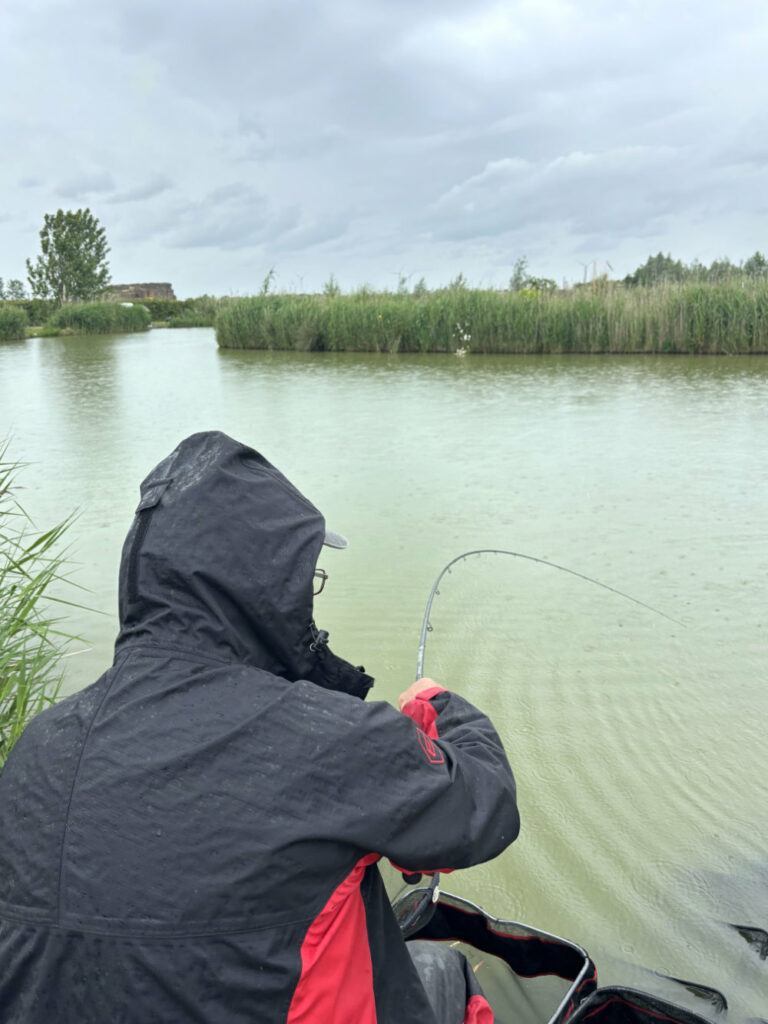
Weight Building
I gradually worked my way through these chunky little stockies, which were eagerly mopping up any pellets I was catapulting across to them. However, I could see other species were swirling for casters when I alternatively fed helpings of those. It would soon be time to have a go with the change bait. Carp still take casters, but not anywhere as keenly as pellets. Having this back up bait generally makes sessions more varied as they progress. A pint of fresh shells has got me out of trouble in many situations, even going back to the days of bloodworm matches. Adding a few casters into groundbait and trying one on the hook later in events, used to sort out much better-quality silver fish. Anybody solely using bloodworm and joker would only tend to catch loads of small stuff, while the extra ingredient could boost weights by several pounds.
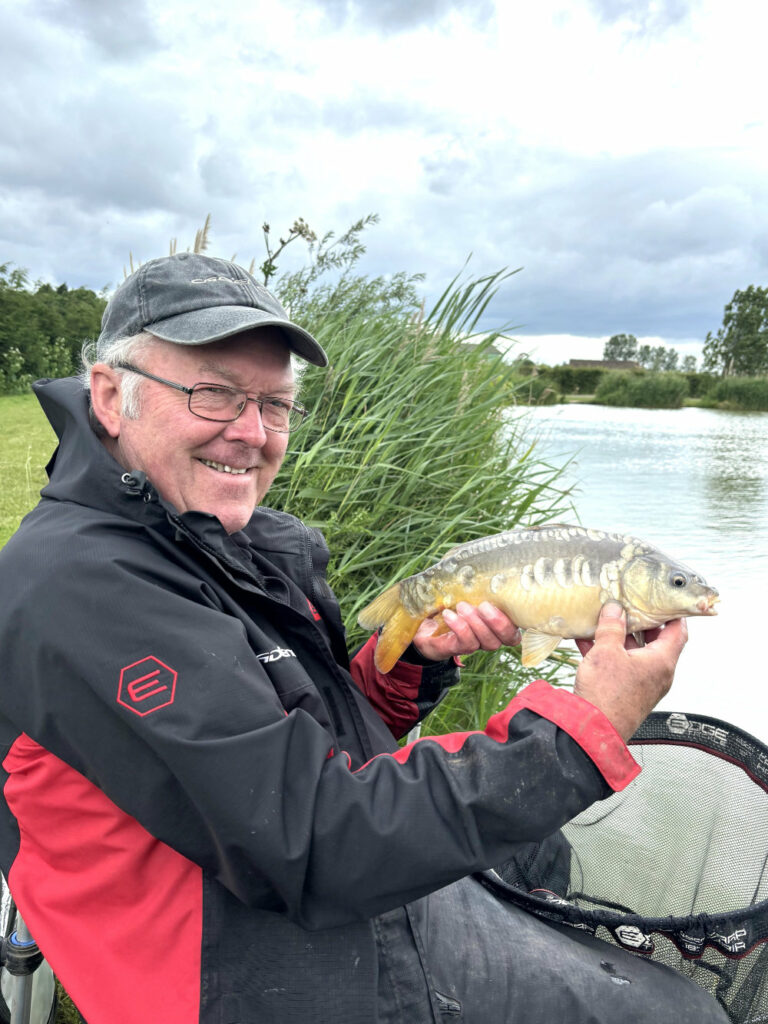
New Ways
I’m always up for trying new things, like these drilled waggler weights around my swivel float adaptor. I could use even bigger ones and lock them with rubber line stops, but that would cause the rig to dive more deeply as it landed, similar to how loaded floats behave. That’s okay in open water when fishing at greater depth, but not so good when fishing shallow towards an island feature. In this case, I used two smaller locking shot either side of medium drilled weights because it’s a good chuck and I don’t want the float to slip. With lesser capacity wagglers, one non-toxic split shot or a couple of lead number 8s are enough to hold everything firmly. Drilled waggler weights are time-consuming to get right initially, but once they are set perfectly, I keep them and any locking shot attached to the float when I store it away in my seat box.
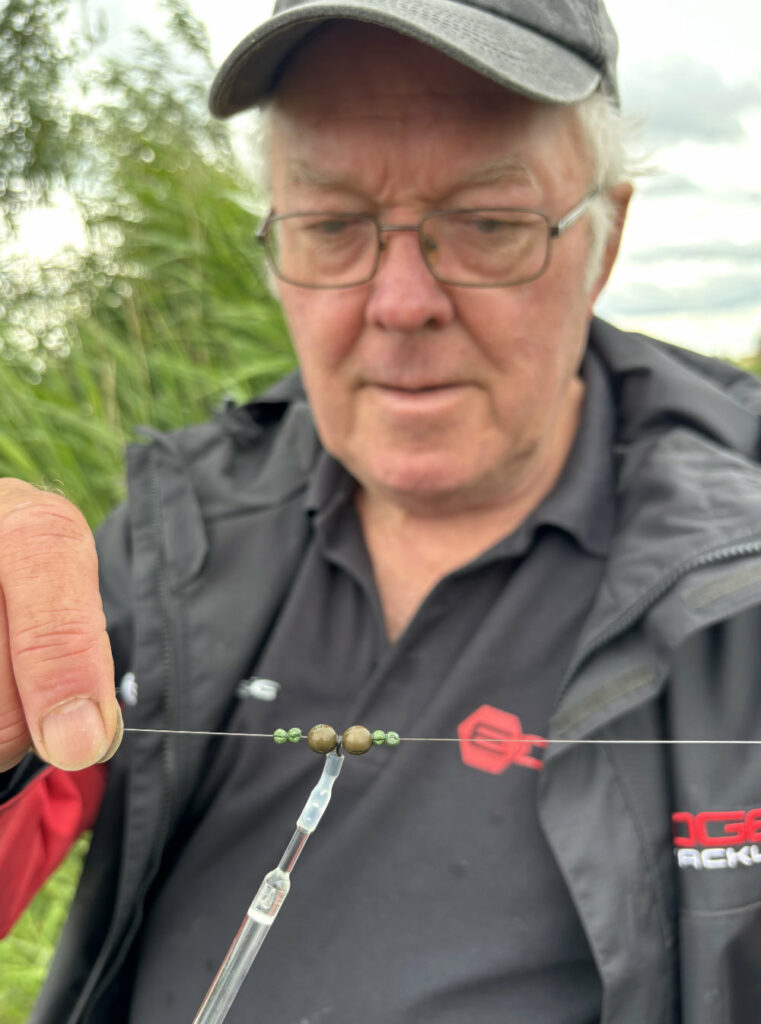
Perfect Balance
I rarely use round micro shot these days, much preferring the easier way cube style weights like Stotz can be nipped onto line. I use Styl pincers for this task, in this case to install a number 10 as a final telltale on the hook length. The latter is attached to the main line via a micro swivel, which prevents the finer mono from twisting up, especially important when using casters or maggots that spin on the retrieve. I can always add another tiny weight or two above the swivel, to get the hook length down faster. I use quite long 14 inch hook lengths or traces because they are stronger than shorter ones, retaining a bit more stretch. I also think that small cube shaped micro shot fall a bit more slowly than round versions. It’s only minimal, but small things like this add up towards better rig presentation, resulting in more bites and bigger catches.
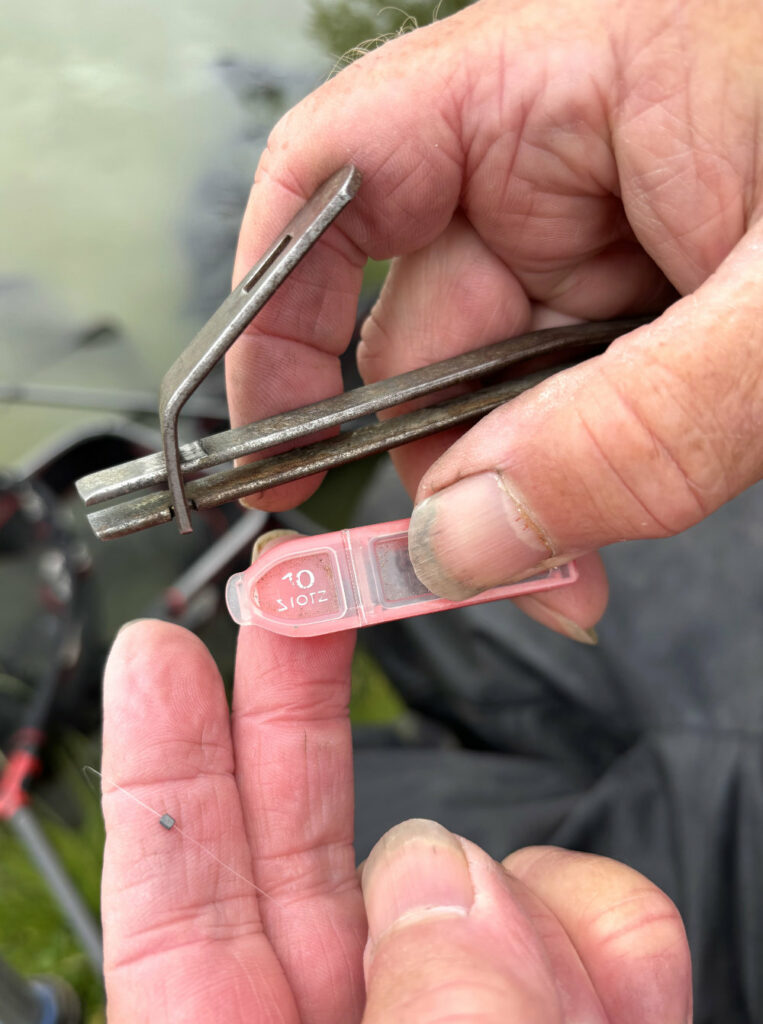
Second Wind
I snipped off the pellet hook pattern I was using and tied on a different and smaller model, more suited to a single caster. At a time when the carp were fading away, the change bait brought back the action, only this time from other species that were stacked up in the swim. I caught chub, roach, rudd, ide, perch, and even a stillwater barbel, highlighting what I might have been missing by staying with pellets. A few carp did show as well, but it was a different world using casters. This bait also finds hidden shoals of skimmers, bigger bream, crucians, hybrids, and tench in carp packed venues. But there is one proviso, casters need to be fresh. The type in sealed packs, which have been stored for a long time, quickly go black and rubbery as soon as you open the bag. Old bait doesn’t work anywhere near as well as crispy fresh stuff.
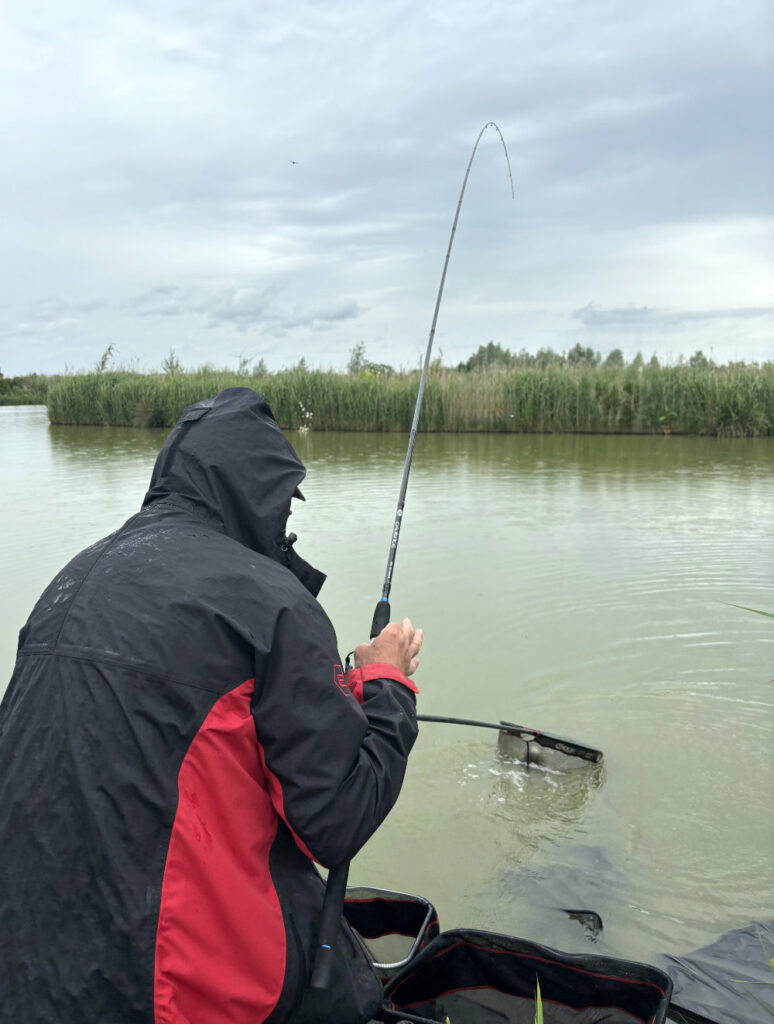
Catty Tricks
I need a good collection of catapults for the different ways I fish, ranging from small pole style ones, to ultra-powerful models. I store these in groups, held together around the top of their handles with Velcro rod bands, which stops them from tangling. I generally use slightly shorter elastics than normal, which puts the pouch closer to hand for one-handed filling when resting a catty over a bait box. On some of my lighter action catties I use hollow pole elastic, which works out cheaper than buying shorter lengths of replacement latex, doing an identical job. For medium to long range, I mainly use Guru orange elastics, over different frames. As mentioned previously, my favourite plastic loose feed pouch is the latest Drennan design, which keeps its shape despite heavy usage and groups most baits well, particularly pellets.
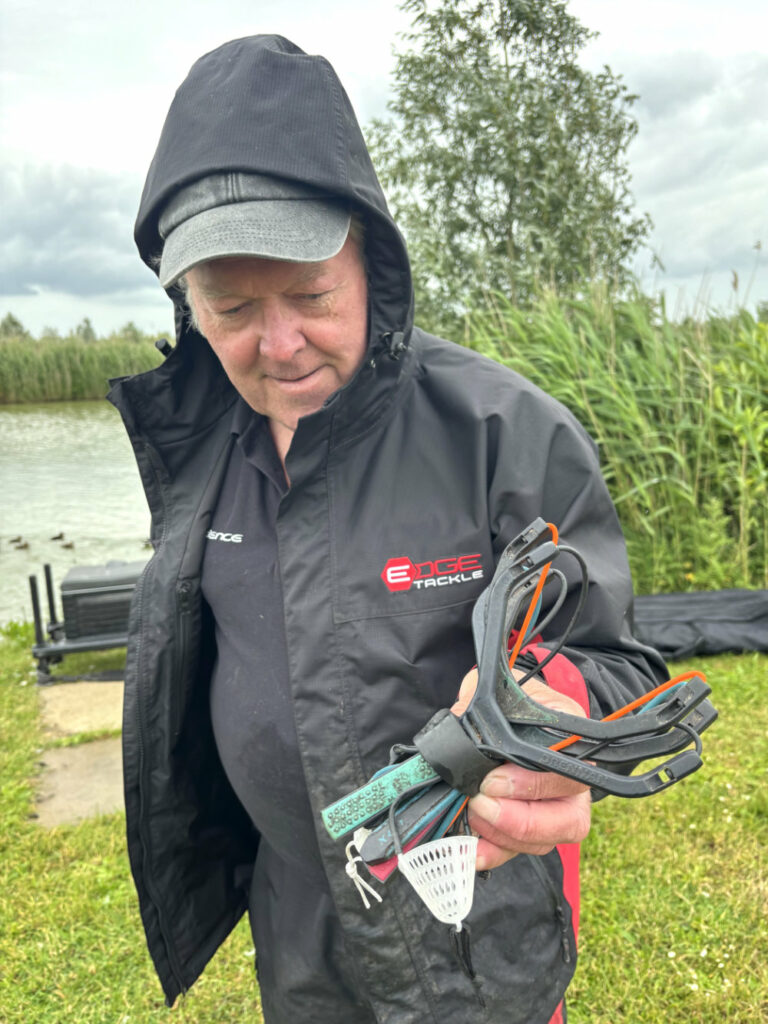
Double Whammy
Once fish were feeding freely, I could have blasted the swim with pellets and started to worry about filling several keepnets to their correct limits with carp. They were good fun to begin with, but it was noticeable Monty quickly came back and parked himself next to me when I started putting silver fish into a second net. I also enjoyed the variation and discovering species that weren’t even mentioned on the fishery website for the lake in question. For me, fishing isn’t just about bagging up, requiring some mystery factor. I’ve spent too long on natural venues where that plays an important part in retaining interest, to want to take a safer and more basic route. I also reckon I get even better value for the price a day ticket costs by mixing things up. Monty seemed to agree by sitting next to the keepnet that the silver fish were going into.
